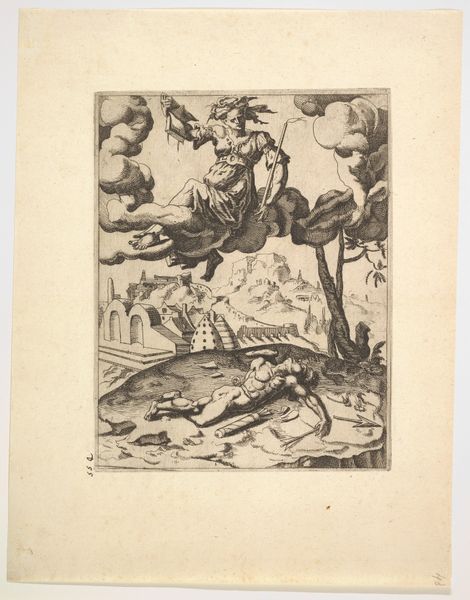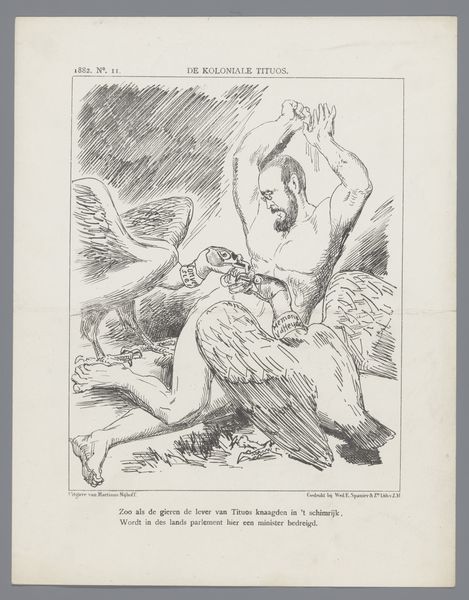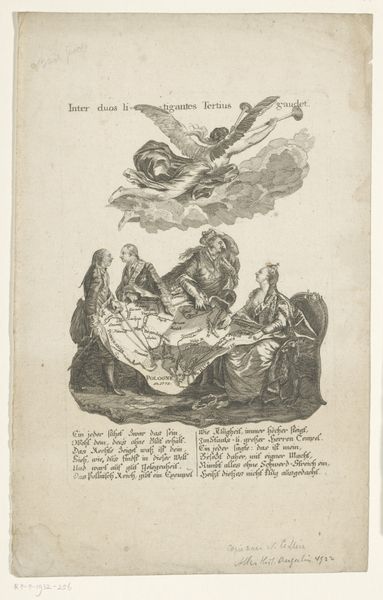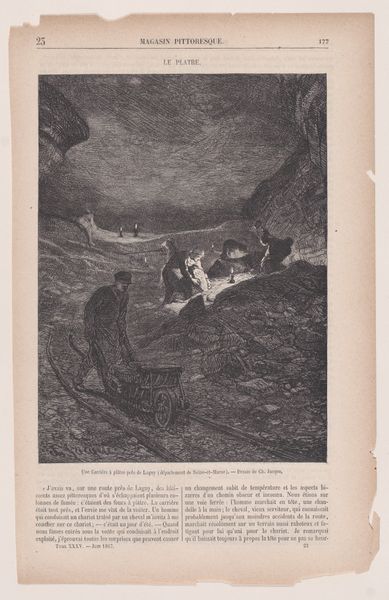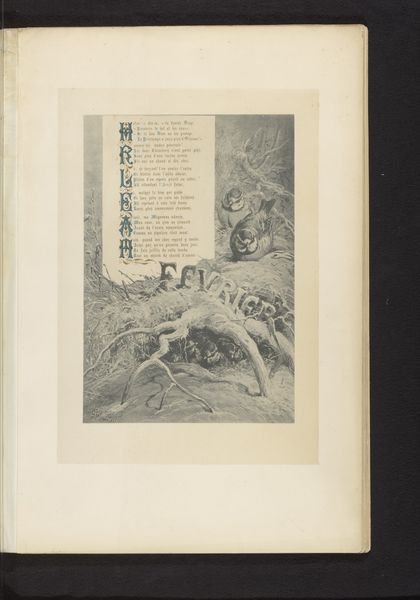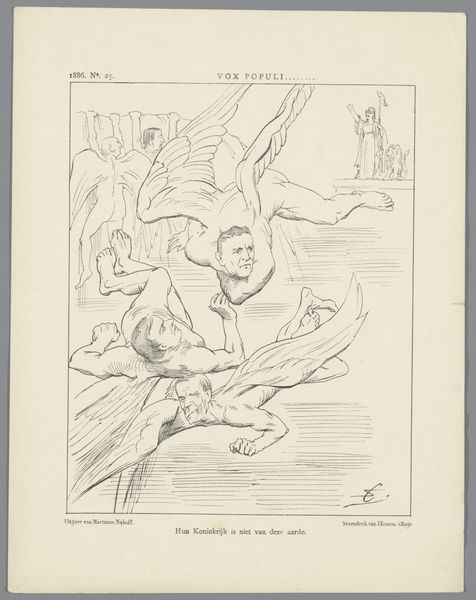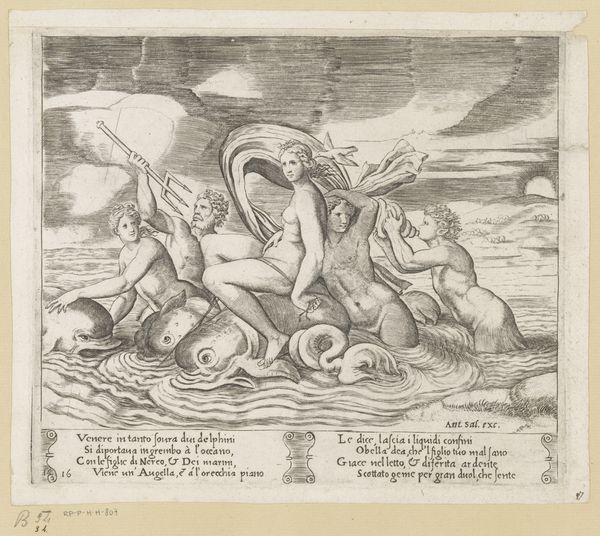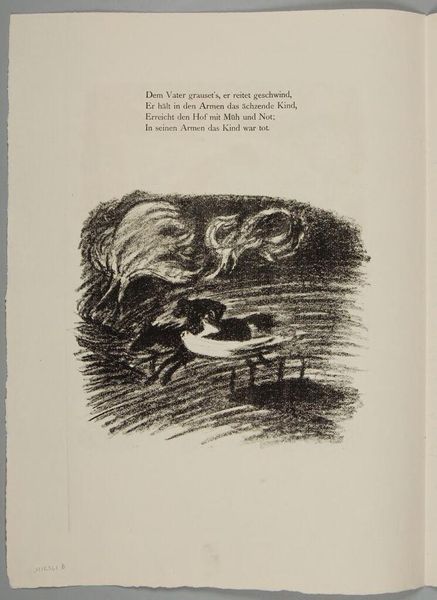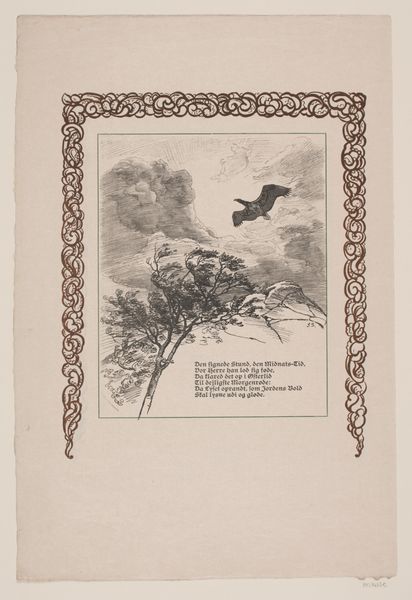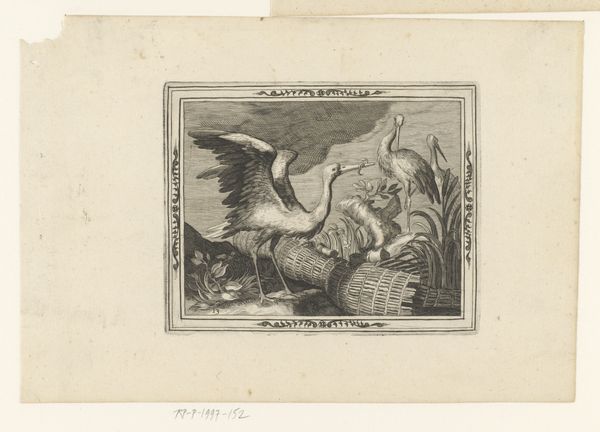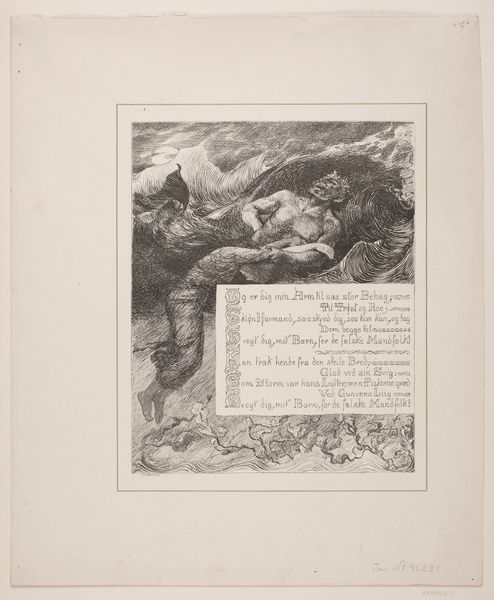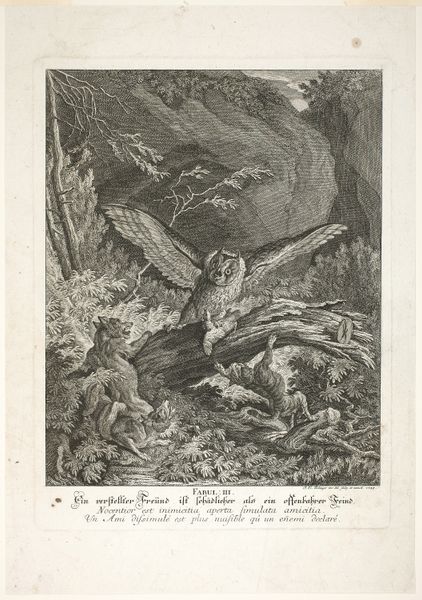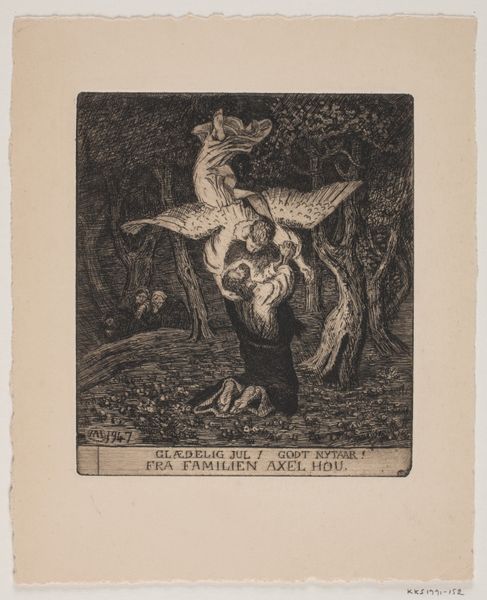
drawing, print, ink
#
drawing
#
narrative-art
# print
#
caricature
#
figuration
#
ink
#
line
Dimensions: height 275 mm, width 215 mm
Copyright: Rijks Museum: Open Domain
This political print by Johan Michaël Schmidt Crans was made in 1886, using a technique called lithography. It’s a method well-suited to conveying information quickly and cheaply, which is important when you’re commenting on current events. The effect of lithography is all in the drawing. The artist uses a grease crayon to make marks on a flat stone, which is then treated with chemicals to fix the design. When the stone is inked, the ink adheres only to the greasy areas, and then it can be printed onto paper. Look closely and you'll see the characteristics of the medium: the crisp lines, the dense areas of shading, and the way the image is built up from many small strokes. All this takes a practiced hand. Schmidt Crans was a skilled draughtsman, who contributed regularly to satirical magazines. His skills, like the lithographic process itself, were part of a broader media landscape, where images could be quickly produced and disseminated, shaping public opinion.
Comments
No comments
Be the first to comment and join the conversation on the ultimate creative platform.
